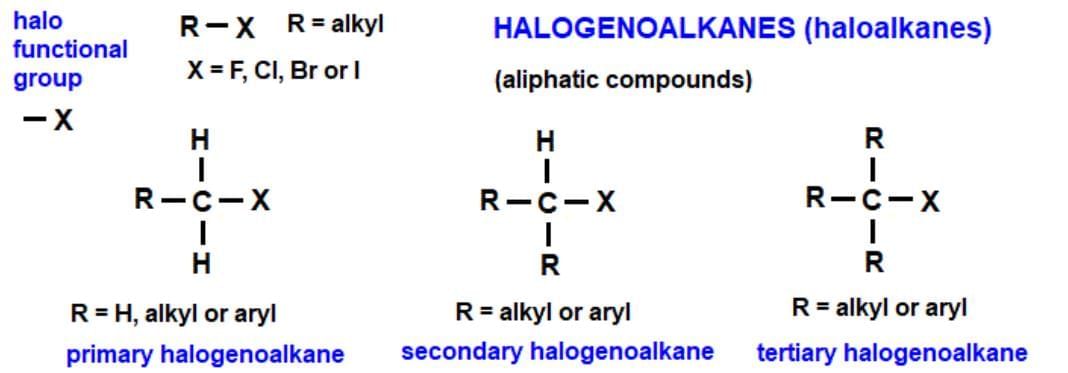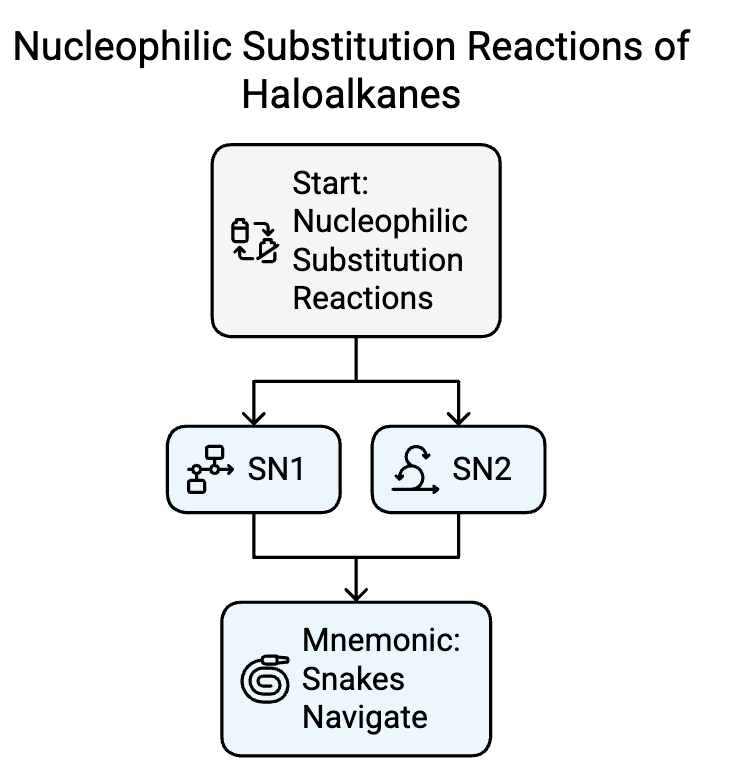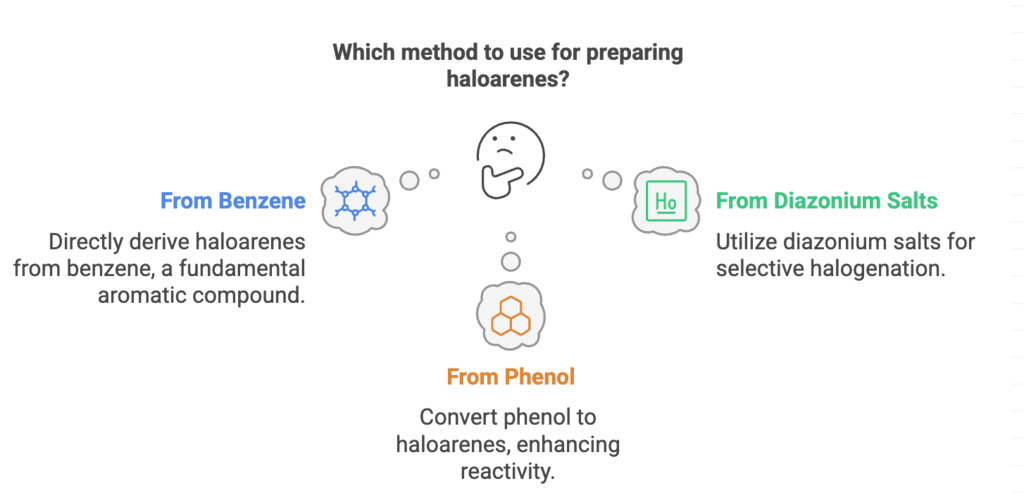Mnemonics: Haloalkanes and Haloarenes | Chemistry Class 12 - NEET PDF Download
Classification of Haloalkanes
Types: Primary, Secondary, Tertiary
Types of Halogen Atoms
Types: Fluorine, Chlorine, Bromine, Iodine
Mnemonic: "Frogs Climb Briskly In"
Breakdown:
- Frogs - Fluorine
- Climb - Chlorine
- Briskly - Bromine
- In - Iodine

Methods of Preparation of Haloalkanes
Types: From Alcohols, From Alkenes, From Alkanes
Mnemonic: "Apes Admire Apples"
Breakdown:
- Apes - From Alcohols
- Admire - From Alkenes
- Apples - From Alkanes
Nucleophilic Substitution Reactions of Haloalkanes
Types: SN1, SN2
Mnemonic: "Snakes Navigate"
Breakdown:
- Snakes - SN1
- Navigate - SN2

Factors Affecting Nucleophilic Substitution
Types: Nature of Substrate, Nucleophile, Solvent, Leaving Group
Mnemonic: "Nervous Newts Swim Lightly"
Breakdown:
- Nervous - Nature of Substrate
- Newts - Nucleophile
- Swim - Solvent
- Lightly - Leaving Group
Reactions of Haloalkanes
Types: Nucleophilic Substitution, Elimination, Reduction, Wurtz Reaction
Mnemonic: "Nuts Enjoy Running Wild"
Breakdown:
- Nuts - Nucleophilic Substitution
- Enjoy - Elimination
- Running - Reduction
- Wild - Wurtz Reaction
Preparation Methods of Haloarenes
Types: From Benzene, From Diazonium Salts, From Phenol
Mnemonic: "Bears Dig Pits"
Breakdown:
- Bears - From Benzene
- Dig - From Diazonium Salts
- Pits - From Phenol

Reactions of Haloarenes
Types: Electrophilic Substitution, Nucleophilic Substitution, Wurtz-Fittig Reaction
Mnemonic: "Elephants Nudge Wary Foxes"
Breakdown:
- Elephants - Electrophilic Substitution
- Nudge - Nucleophilic Substitution
- Wary Foxes - Wurtz-Fittig Reaction
|
75 videos|278 docs|78 tests
|
FAQs on Mnemonics: Haloalkanes and Haloarenes - Chemistry Class 12 - NEET
| 1. What are haloalkanes and haloarenes? |  |
| 2. How can I remember the different types of haloalkanes and haloarenes for NEET? |  |
| 3. What reactions are commonly associated with haloalkanes and haloarenes? |  |
| 4. What are the physical properties of haloalkanes and haloarenes? |  |
| 5. Why are haloalkanes and haloarenes important in medicinal chemistry? |  |
















